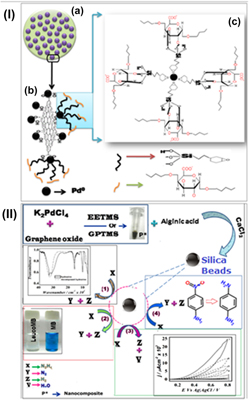Crossref Citations
This article has been cited by the following publications. This list is generated based on data provided by
Crossref.
Wu, Zhen
Zhu, Luying
Yang, Fusheng
Nyamsi, Serge N.
Porpatham, Ekambaram
and
Zhang, Zaoxiao
2018.
Toward the design of interstitial nonmetals co-doping for Mg-based hydrides as hydrogen storage material.
Journal of Materials Research,
Vol. 33,
Issue. 23,
p.
4080.
Pandey, Prem C.
Singh, Shwarnima
and
Sawant, Shilpa N.
2018.
Functional alkoxysilane mediated controlled synthesis of Prussian blue nanoparticles, enabling silica alginate bead development; nanomaterial for selective electrochemical sensing.
Electrochimica Acta,
Vol. 287,
Issue. ,
p.
37.
Mahto, Madhusudan Kr.
Samanta, Dipanjan
Konar, Suraj
Kalita, Himani
and
Pathak, Amita
2018.
N, S doped carbon dots—Plasmonic Au nanocomposites for visible-light photocatalytic reduction of nitroaromatics.
Journal of Materials Research,
Vol. 33,
Issue. 23,
p.
3906.
Pandey, P. C.
and
Shukla, Shubhangi
2018.
Solvent dependent fabrication of bifunctional nanoparticles and nanostructured thin films by self assembly of organosilanes.
Journal of Sol-Gel Science and Technology,
Vol. 86,
Issue. 3,
p.
650.
Sun, Qiming
Wang, Ning
Xu, Qiang
and
Yu, Jihong
2020.
Nanopore‐Supported Metal Nanocatalysts for Efficient Hydrogen Generation from Liquid‐Phase Chemical Hydrogen Storage Materials.
Advanced Materials,
Vol. 32,
Issue. 44,
Chalgin, Aleksei
Song, Chengyi
Tao, Peng
Shang, Wen
Deng, Tao
and
Wu, Jianbo
2020.
Effect of supporting materials on the electrocatalytic activity, stability and selectivity of noble metal-based catalysts for oxygen reduction and hydrogen evolution reactions.
Progress in Natural Science: Materials International,
Vol. 30,
Issue. 3,
p.
289.
Chen, Yuerong
and
Jin, Huiming
2020.
Fabrication of amorphous Co–Cr–B and catalytic sodium borohydride hydrolysis for hydrogen generation.
Journal of Materials Research,
Vol. 35,
Issue. 3,
p.
281.
Pandey, Prem C.
Mitra, Murli Dhar
Tiwari, Atul Kumar
and
Singh, Shwarnima
2021.
Synthetic incorporation of palladium-nickel bimetallic nanoparticles within mesoporous silica/silica nanoparticles as efficient and cheaper catalyst for both cationic and anionic dyes degradation.
Journal of Environmental Science and Health, Part A,
Vol. 56,
Issue. 4,
p.
460.
Jaleh, Babak
Nasrollahzadeh, Mahmoud
Nasri, Atefeh
Eslamipanah, Mahtab
Moradi, Aida
and
Nezafat, Zahra
2021.
Biopolymer-derived (nano)catalysts for hydrogen evolution via hydrolysis of hydrides and electrochemical and photocatalytic techniques: A review.
International Journal of Biological Macromolecules,
Vol. 182,
Issue. ,
p.
1056.
Pandey, P. C.
Pandey, Ashsish Kumar
and
Narayan, Roger J.
2021.
Designing organotrialkoxysilane-functionalized microscale enzyme carrier: Spherical polymersomes with tunable catalytic potential.
Journal of Materials Research,
Vol. 36,
Issue. 14,
p.
3010.
Pandey, P. C.
Mitra, Murli Dhar
Shukla, Shubhangi
and
Narayan, Roger J.
2021.
Organotrialkoxysilane-functionalized mesoporous Pd–Ni nanocatalyst for selective hydrazine decomposition and sensing.
MRS Communications,
Vol. 11,
Issue. 1,
p.
78.
Pandey, Prem C.
Mitra, Murlidhar
Pandey, Ashish Kumar
and
Narayan, Roger J.
2021.
Organotrialkoxysilane mediated rapid and controlled synthesis metal nanoparticles in both homogeneous and heterogeneous phase and their catalytic applications.
MRS Advances,
Vol. 6,
Issue. 3,
p.
43.
Raza, Hafiz Hamid
Murtaza, G.
and
Shafiq, Maleeha
2023.
Structural, phonon, thermodynamic, and electronic properties of MgFeH3 at different pressures: DFT study.
Computational and Theoretical Chemistry,
Vol. 1221,
Issue. ,
p.
114030.
Mitra, Murli Dhar
Singh, Haribrahma
Singh, Richa
and
Pandey, Prem C.
2023.
Organotrialkoxysilanes Mediate the Syntheses of Fluorescent Gold Nanoparticles and TiO2‐Supported Ag−Ni Nanocatalysts for Selective Hydrazine Sensing and Decomposition.
ChemistrySelect,
Vol. 8,
Issue. 40,
Shukla, Shubhangi
Joshi, Naveen Narasimhachar
Kadian, Sachin
and
Narayan, Roger J.
2024.
Development of Drug-Loaded PCL@MOF Film Enclosed in a Photo Polymeric Container for Sustained Release.
ACS Applied Bio Materials,
Vol. 7,
Issue. 8,
p.
5382.
Koufi, Ayoub
Ziat, Younes
Belkhanchi, Hamza
and
Bouzaid, Abdellah
2025.
DFT and BoltzTrap investigations on the thermal and structural characteristics of the perovskite MgCuH3 and MgCoH3.
Computational Condensed Matter,
Vol. 42,
Issue. ,
p.
e01010.




